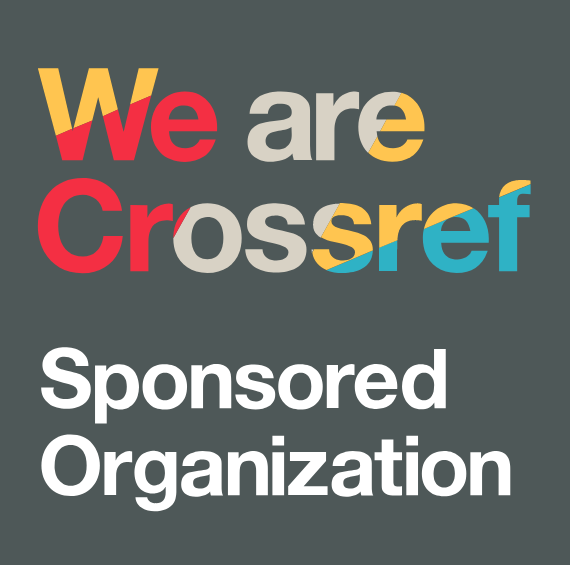Factors Distance and Number of Users on WiFi Network Signal Quality
DOI:
https://doi.org/10.38035/gijes.v3i2.548Keywords:
Distance, Number of Users, Signal Quality, WiFi NetworkAbstract
The influence of distance and number of users on the quality of WiFi network signals is a scientific article with the aim of analyzing whether signal quality is affected by distance and the number of WiFi network users. Qualitative method with a phenomenological approach, The phenomenological approach emphasizes the description of the subject's life experience from the participant's own perspective (phenomenology as a social research method). The results of this article are: 1) Distance affects the quality of WiFi network signals, 2) The number of users affects the quality of WiFi network signals. Apart from these 2 exogenous variables that affect the endogenous variable of signal quality, there are many other factors including network performance, communication barriers, connection stability.
References
Ardiansyah, F., Hediyanto, R., & Kurniawan, A. (2023). Analisis dan Optimasi Teknologi Jaringan Wireless pada Ruangan Proses Manufaktur di Gedung Mangudu Universitas Telkom dengan Menggunakan Wireless Site Survey. Jurnal Ilmiah Pendidikan Indonesia (JIPI).
Jurnal Litek. (2023). Analisis Kinerja WLAN pada Frekuensi 2,4 GHz dan 5 GHz menggunakan Konfigurasi PPPoE dengan Quality of Service (QoS). Jurnal Litek. https://ejournal.pnl.ac.id/index.php/litek/article/view/4
Maulana, A., & Sulistyo, W. (2024). Analisis Kualitas Signal Wireless Menggunakan Received Signal Strength Indicator (RSSI) di SMP Negeri 10 Salatiga. IT Explore: Jurnal Penerapan Teknologi Informasi dan Komunikasi, 3(1), 63 78.
Minarsih, M. (2018). Perancangan Jaringan Wireless di PPPA Darul Qur'an Al-Amin. Universitas Islam Negeri Sunan Ampel Surabaya.
Naraswari, N., Imansyah, F., & Pontia, F. T. (2017). Analisis Uji Kuat Sinyal terhadap Jarak Jangkau Maksimal Sistem Penerimaan Sinyal Internet Berbasis Edimax HP-5101ACK. Jurnal Teknik Elektro, Universitas Tanjungpura.
Nova Selvia, D. Z. Abidin, & Nurhadi. (2022). Analisis Interferensi Co-Channel Pada Kinerja Sinyal yang Dipancarkan Access Point Wireless Fidelity (WiFi). Jurnal JAKAKOM, Universitas Dinamika Bangsa. https://ejournal.unama.ac.id/index.php/jakakom/article/view/2197
Ningsih, S. A. (2023). Analisis Kinerja Jaringan Wireless LAN pada Fakultas Matematika dan Ilmu Pengetahuan Alam Universitas Halu Oleo. AnoaTIK.
Permadi, F. A. (2018). Optimalisasi Internet Hotspot Menggunakan User Management System. Universitas Kristen Satya Wacana.
Prasetyo, J., & Tan, A. (2021). Analisis Quality of Service (QoS) Jaringan Wireless 2,4 GHz dan 5 GHz di Dalam Ruangan dengan Hambatan Kaca. Jurnal Informatika dan Teknologi Komputer (JITIKA), Universitas Internasional Batam. https://jurnal.asia.ac.id/index.php/jitika/article/view/609
Satwika, G. S., & Sukafona, N. M. (2022). Analisis Coverage dan Quality of Service Jaringan WiFi 2,4 GHz di STMIK STIKOM Indonesia. Jurnal Resistor, STMIK STIKOM Indonesia.
Sulistyo, H., Daryanto, H., & Oktavianto, H. (2023). Optimalisasi Jangkauan Sinyal Wireless Fidelity Menggunakan Mi WiFi Range Extender Pro. Universitas Muhammadiyah Jember.
Syaljumairi, R., Defit, D., Sumijan, & Elda, R. (2021). Akurasi Klasifikasi Pengguna terhadap Hotspot WiFi dengan Menggunakan Metode K-Nearest Neighbour. Jurnal Sistem Informasi dan Teknologi.
Sulistyo, H., Daryanto, H., & Oktavianto, H. (2023). Optimalisasi Jangkauan Sinyal Wireless Fidelity Menggunakan Mi WiFi Range Extender Pro. Universitas Muhammadiyah Jember.
Downloads
Published
How to Cite
Issue
Section
License
Copyright (c) 2025 Reni Silviah

This work is licensed under a Creative Commons Attribution 4.0 International License.
Copyright:
Authors who publish their manuscripts in this journal agree to the following conditions:
- Copyright in each article belongs to the author.
- The author acknowledges that Greenation International Journal of Engineering Science (GIJES) has the right to be the first to publish under a Creative Commons Attribution 4.0 International license (Attribution 4.0 International CC BY 4.0).
- Authors can submit articles separately, arrange the distribution of non-exclusive manuscripts that have been published in this journal to other versions (for example, sent to the author's institutional repository, publication in books, etc.), acknowledging that the manuscript has been published for the first time in GIJES.

























